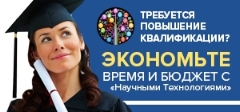Ulitovskiy S. B. (DMSc, professor, Head of the Preventive dentistry department, Deputy Director for Science of the Pavlov’s First St. Petersburg State Medical University’s Research Institute for Dentistry and Maxillofacial surgery, Honored doctor of the Russian Federation, Honored dentist of the RDA, Pavlov’s First St. Petersburg State Medical University)
Matveev S. V. (DMSc, professor, Faculty of the Postgraduate Education, Head of the department of Physical treatment methods and sports medicine, Pavlov’s First St. Petersburg State Medical University)
Kalinina O. V. (DMSc, assistant professor, Pavlov’s First St. Petersburg State Medical University)
Shevtsov A. V. (PhD in medicine, assistant, Pavlov’s First St. Petersburg State Medical University)
| |
This article shows the relationship between body position and dental occlusion. The existence of interaction between the head, cervical spine and chewing set is a matter of scientific controversy [6]. There are also manual techniques that use the relationship between posture and occlusion to correct dysfunctions, such as osteopathic practice, which relies on manual contact for diagnosis and treatment [3]. The occlusion and postural impairment relationship requires further research.
Keywords:manual therapy, bite, bite pathology, locomotor system, posture disorders.
|
|
| |
|
Read the full article …
|
Citation link:
Ulitovskiy S. B., Matveev S. V., Kalinina O. V., Shevtsov A. V. RELATIONSHIP OF BITE ANOMALIES WITH SKELETAL PATHOLOGIES // Современная наука: актуальные проблемы теории и практики. Серия: Естественные и Технические Науки. -2024. -№09. -С. 216-219 DOI 10.37882/2223-2966.2024.9.40 |
|
|






